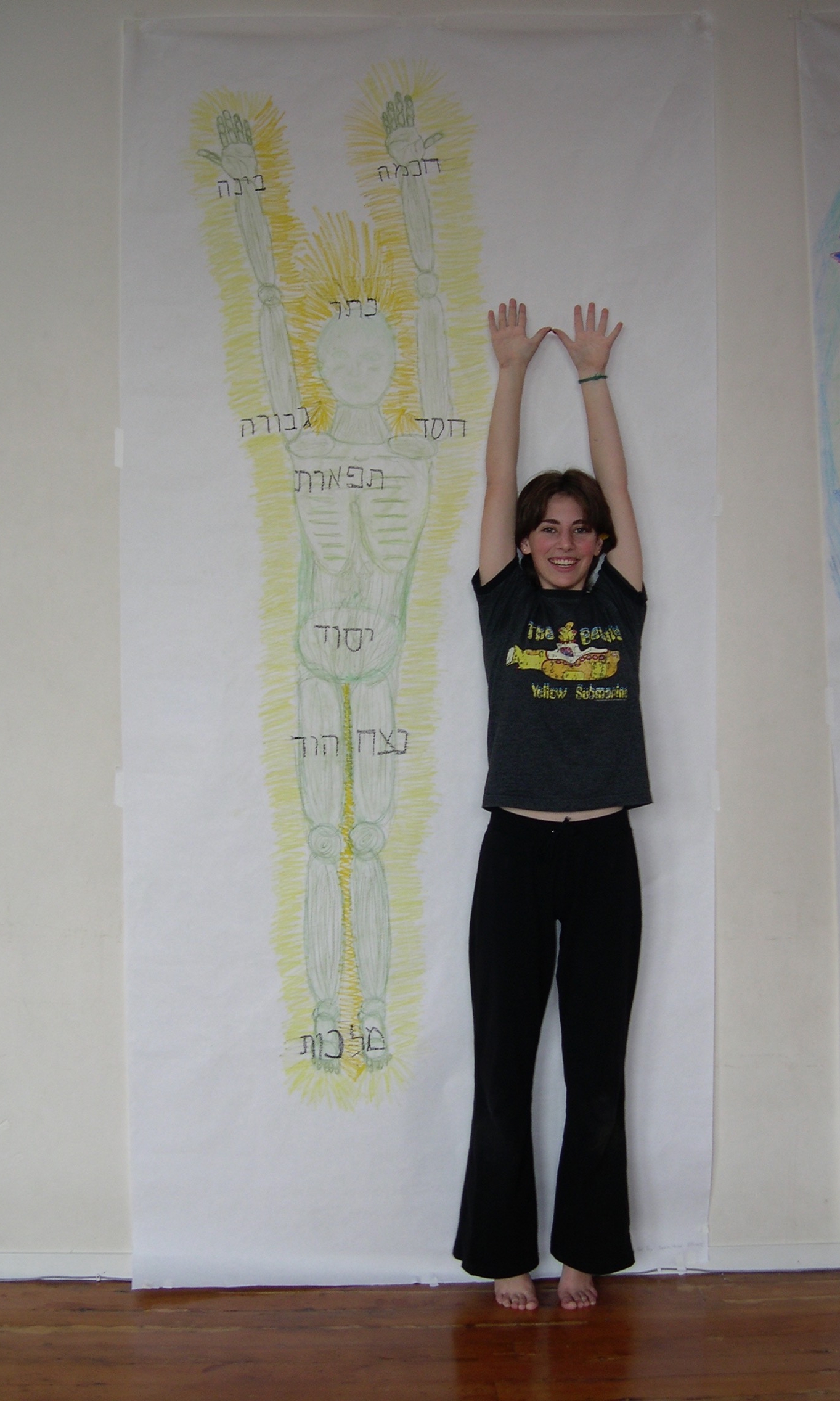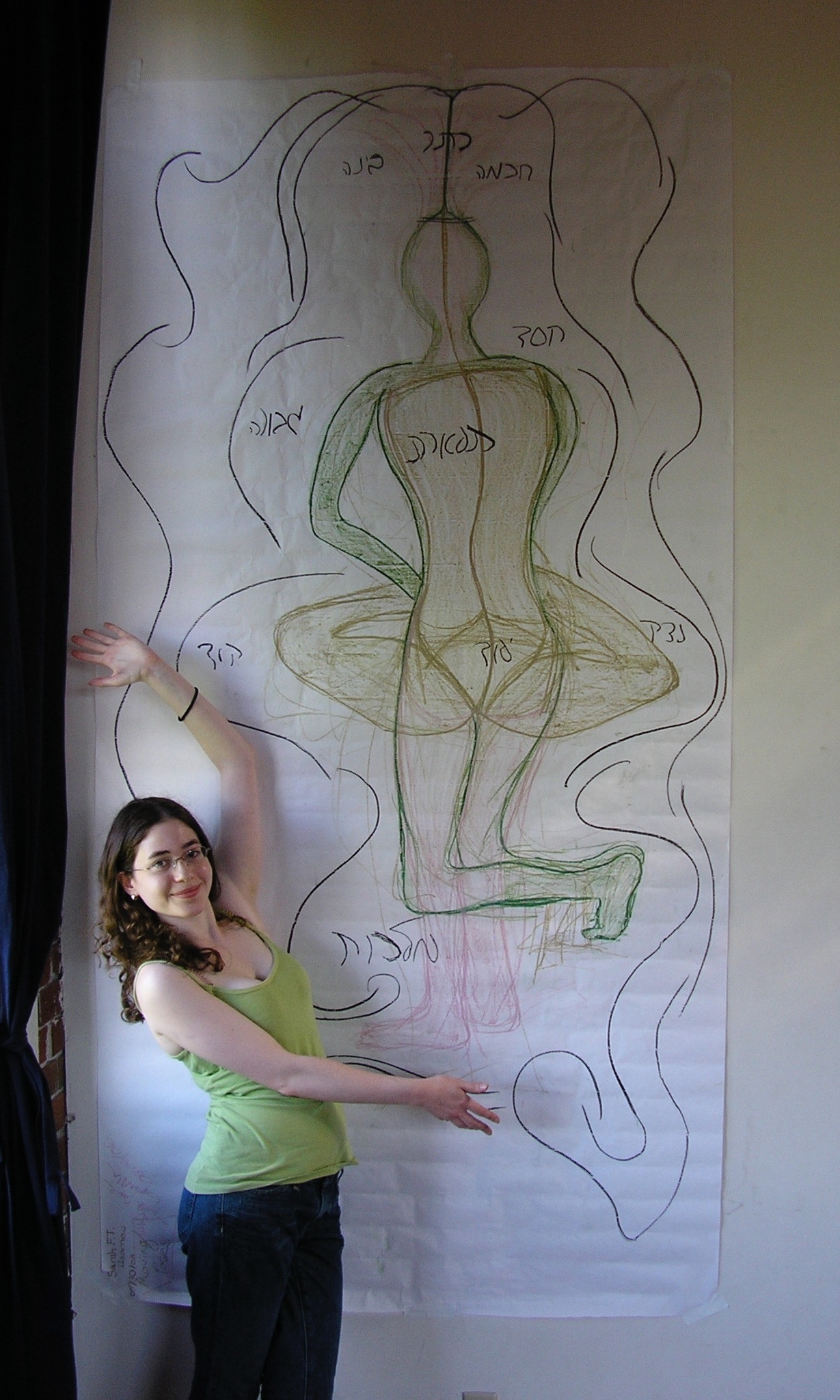Our Approach to Embodied Torah
Read more about the origins of Embodied Jewish Learning and our unique approach to Jewish Embodiment.
Photo Courtesy of Peninsula Jewish Community Center
Mission
Our mission is to elevate the wisdom of the body as a resource for balance and well-being in Jewish life.
EJL hosts an Advanced Teacher Training and The Embodied Jewish Wisdom Network, a global community of leaders and learners of embodiment in Jewish contexts. We offer Jewish educators and leaders mentorship and training in best practices for infusing Jewish wisdom into their classes. We provide spiritual seekers, dancers, movers, yogis, and embodied mindfulness practitioners a unique way to access Jewish wisdom that is meaningful and relevant to their everyday lives and resonates with their daily practices to cultivate well-being.
Ultimately, we envision a model of Jewish life, prayer, community and learning where accessing and experiencing the interconnectedness of all levels of being (mind, body, heart and soul) is the norm, not a 'special one time' experience.
Embodied Jewish Learning offers all people the chance to experience Jewish wisdom through movement practices that nourish their minds, bodies, hearts and souls and empowers them to fully embody and express their unique role in creating positive change for our world.
Methodology: Example of How it Works
Embodying Divinity
We introduce a theme or line of text.
In the Torah we are instructed to design a physical dwelling place – a Mishkan - for the divine presence to be with/among us in the desert:
‘V’Asu Li Mikdash V’Shachanti B’tocham.’
וְעָשׂוּ לִי, מִקְדָּשׁ; וְשָׁכַנְתִּי, בְּתוֹכָם
(Exodus 25:8)
One interpretation of this line is that we are asked to create a physical resting space for the divine to reside inside of our bodies — How can we experience this line of Torah in our embodied practice?
We begin with the physical practice. We first take time to breathe and stretch our bodies.
From a quiet, calm open space we engage in a movement or yoga practice where we pay close attention to the structure of the body.
We focus on one part of the body - the bones of the structure of the foot, for instance, that allow us to move and walk and shift weight with balance. Or the descent of the diaphragm that creates expansion of the belly on the inhale and the settling of the belly on the exhale. Or the flexion and extension of the knee or elbow joints - that allow our limbs to move with dexterity, agility and simple functionality!
Throughout the entire practice we pay attention to the precise physical details of the anatomical structure in each movement or posture. And our conscious movements facilitate more fluidity, range of motion, or openings in the tight spaces in the body.
We infuse the physical practice with the theme or text.
Now that we have a physical experience of opening, we can move into considering the ways in which the intricate design and details of the Miskhan mirror the intricate design and details of the structure of the body. We consider the physical experience of being a ‘body’ or ‘structure’ inhabited by our ‘spirit’ or breath.
We can enhance the physical practice with more detailed ideas from a secondary text. A beautiful Midrash (commentary on the Torah) likens certain elements in the body to the parts of the Mishkan:
You find in the Mishkan that the beams were fixed into the sockets… and in the body the ribs are fixed into the vertebrae…
In the Mishkan the beams were covered with gold, in the body the ribs are covered with flesh…
In the Mishkan there were bolts in the beams to keep them upright, and in the body limbs and sinews are drawn to keep the human being upright…
In the Mishkan the veil divided between the Holy-Place and the Holy-of-Holies, and in the body the diaphragm divides the heart from the stomach.
-From Minding the Temple of the Soul by Tamar Frankiel and Judy Greenfeld, p.39
So we continue with the practice, bringing our attention to the particular body parts mentioned in this MIdrash, noting the holy function that each part plays in supporting us to move and live. Our ribs and limbs are beams, our joints are sockets for insertion of these essential bones, our skin are shining forth the divinity from within, our diaphragm separates one part of the body from the other so that we can flourish.
We gather our gleanings and reflect on new discoveries about the text.
Some insights and connections are possible only when we experience and engage with the ideas via embodied experience.
Mishkan has the same Hebrew root as Shechuna, neighborhood, or Shachan, to dwell, or Shechina, the indwelling of divine presence. We consider these ideas as we practice, “How can I feel my body as holy?” or “What does it feel like to consciously inhabit the spaces inside of myself?” We don’t talk or answer with words, we explore with kinesthetic sensing. And we each find our own unique experience of divinity in the body.
Origins of Embodied Jewish Learning
Yoga, Art and Sacred Text: EJL's founding project for teens to explore embodied spirituality, Yoga, Art and Sacred Text was originally based at Midrasha in Berkeley between 2001 - 2005 and supported by the Tikea fellowship at Jewish LearningWorks (formerly the Bureau of Jewish Education) with continuing support from the Richard and Rhoda Goldman Fund. See articles about this project here and here.
Photos of students Jacquelyn Stuber, Lev Hirschhorn, and Sarah Asarnow from Yoga, Art and Sacred Text Classes at Berkeley Yoga Center, 2005
Yoga and Wholeness with a Jewish Twist: Piloted and based at the Peninsula Jewish Community Center (PJCC) in Foster City, California, EJL has offered several workshops and classes for embodying qualities for well-being in our lives: renewal and freedom in connection with the Jewish holidays of Rosh Hashana and Passover, or lovingkindness, discipline, balance, perseverance, gratitude, creativity and grounding in connection with the qualities associated with the Counting of the Omer, between Passover and Shavuot, in her Embodying the Sacred Sefirot series. Read this article by Julie about the practice of Yoga and Jewish Wisdom as a portal to Wellness, and this article by Rabbi Lavey Derby about Jewish Wellness as a path to wholeness and well-being at the PJCC and the impact of this work upon students of all faiths.




